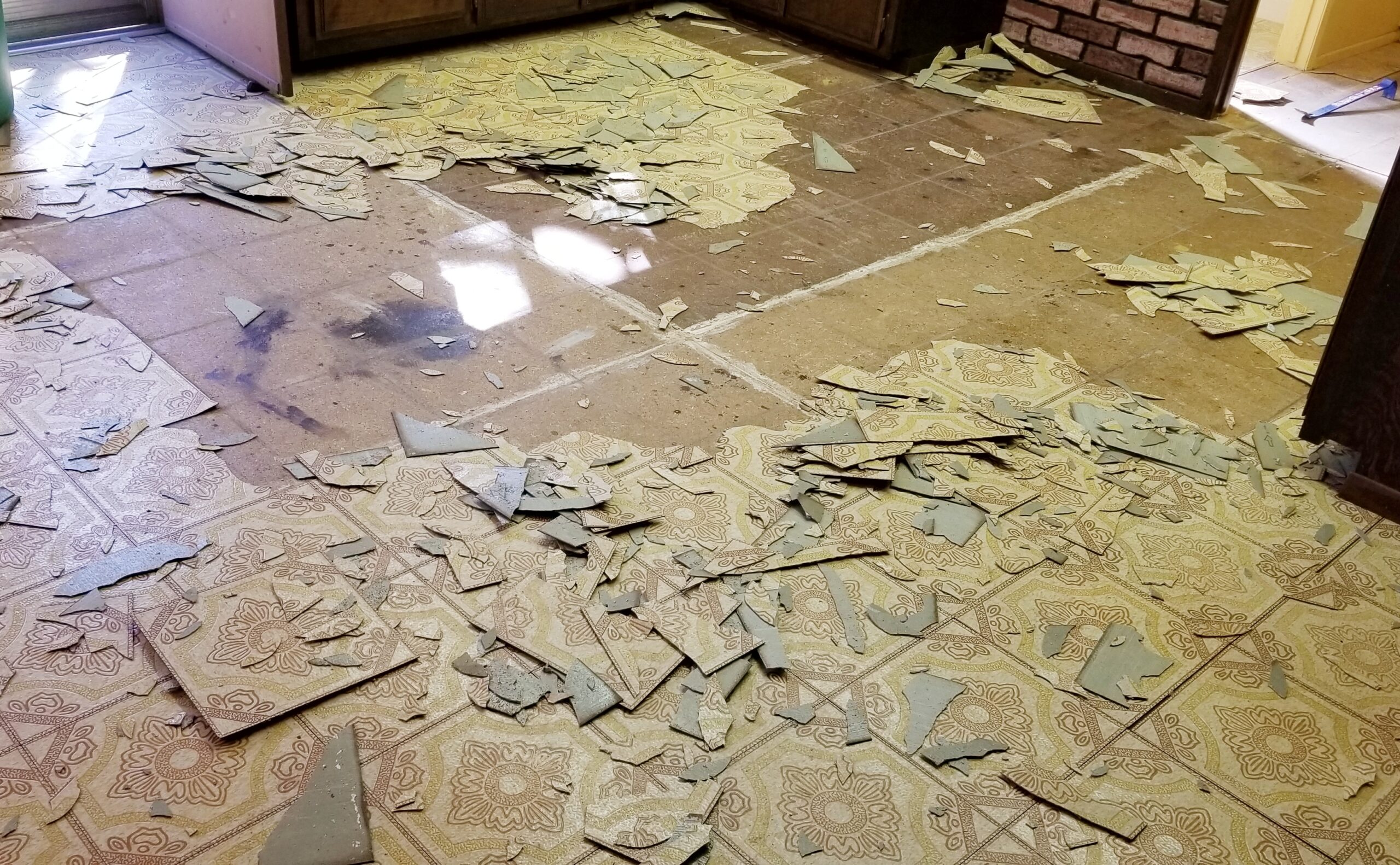
Water damage is one of the most common and costly problems homeowners face. Whether it’s from a burst pipe, a leaking roof, or flooding, water can wreak havoc on your home, leading to structural damage, mold growth, and ruined belongings. The key to minimizing the damage is acting quickly and efficiently. Here’s what you should do if you discover water damage in your home.
1. Ensure Safety First
Before diving into cleanup, your safety should be the top priority. Water damage can create hazardous situations, especially when electricity is involved.
- Turn off the electricity: If it’s safe to do so, shut off the power to the affected areas of your home to avoid the risk of electric shock. If there’s standing water near outlets or electrical appliances, do not enter the area until a professional can assess the situation.
- Stop the water source: If the water damage is due to a burst pipe or a leak, turn off the main water supply to prevent further flooding.
- Evacuate if necessary: If the water damage is severe, such as in the case of a flood, evacuate your home until it is safe to return. Don’t risk your safety by staying in a structurally compromised building.
2. Document the Damage
Before you begin any cleanup efforts, take the time to document the extent of the water damage. This is crucial for insurance purposes, as your insurance company will need proof of the damage to process your claim.
- Take photos and videos: Capture clear, detailed images of all affected areas, including any visible water, damaged belongings, and structural issues.
- Create an inventory: Make a list of all the items that were damaged or destroyed, noting their condition and value. This will help with your insurance claim and any potential compensation.
Documenting the damage thoroughly will make the claims process smoother and help ensure that you receive adequate support from your insurance company.
3. Contact Your Insurance Company
Once you’ve documented the damage, it’s time to contact your homeowner’s insurance provider. Your policy may cover water damage, but the extent of coverage will depend on the cause and type of water intrusion.
- File a claim: Call your insurance company as soon as possible to report the water damage and begin the claims process. Provide them with the documentation you collected, including photos, videos, and an inventory of damaged items.
- Ask about coverage: Your insurance provider will explain what is covered under your policy, including structural repairs, personal belongings, and any additional living expenses (ALE) if you need to temporarily relocate.
- Request an adjuster: The insurance company will likely send an adjuster to assess the damage and provide an estimate for repairs.
It’s essential to communicate clearly with your insurance company and understand what your policy covers to avoid surprises later on.
4. Start Water Removal and Drying
Once you’ve taken care of the initial steps, it’s time to begin the cleanup process. The sooner you start removing water and drying out the affected areas, the less likely you are to experience long-term damage such as mold growth or rot.
- Remove standing water: If there’s a significant amount of standing water, use a wet/dry vacuum or pump to remove it. Be cautious not to use electrical equipment in wet areas unless it’s specifically designed for water extraction.
- Dry out the area: After removing standing water, use fans, dehumidifiers, and open windows to promote airflow and speed up the drying process. If you don’t have access to this equipment, consider renting or purchasing it to prevent further damage.
- Remove water-damaged items: Take out any wet furniture, rugs, carpets, and belongings to dry them in a safe area. If they’re too damaged to salvage, dispose of them properly to avoid spreading contamination.
The key to preventing secondary damage, like mold growth, is to dry out the area as quickly as possible. Mold can start to develop within 24-48 hours, so act swiftly.
5. Clean and Sanitize the Affected Areas
Water damage, especially from floods or sewage backups, can introduce harmful bacteria and contaminants into your home. It’s important to clean and sanitize all affected areas to ensure your home is safe for you and your family.
- Disinfect surfaces: Use a mixture of bleach and water, or a commercial disinfectant, to clean all surfaces that came into contact with the water. This includes walls, floors, and any furniture that can be salvaged.
- Dispose of contaminated items: If the water damage is from sewage or floodwater, some items may need to be thrown away due to contamination. This includes porous materials like mattresses, upholstered furniture, and certain rugs.
- Prevent mold: Use anti-microbial treatments to prevent mold growth. Mold can spread quickly and pose serious health risks, so it’s critical to address it early.
Professional restoration companies have the tools and expertise to ensure your home is properly cleaned and sanitized after water damage. Consider hiring one if the damage is extensive.
6. Assess Structural Damage
Once the water is removed and the area is dry, assess your home for any structural damage. Water can weaken your home’s foundation, walls, and floors, leading to potentially dangerous conditions if not addressed.
- Check for signs of warping or buckling: Wood, drywall, and plaster can absorb water and may warp or buckle after exposure. If you notice any bulging walls or warped floors, you’ll likely need professional repairs.
- Inspect for cracks: Water can cause your foundation or walls to crack over time. This can lead to significant structural issues if not repaired promptly.
- Hire a professional: For extensive damage, it’s best to call in a structural engineer or restoration specialist to evaluate the integrity of your home and recommend repairs.
Ignoring structural damage can lead to more severe issues down the line, so it’s important to address it sooner rather than later.
7. Consider Hiring a Water Damage Restoration Professional
While small water damage can often be handled by homeowners, larger or more complicated situations may require the expertise of a professional restoration company. These professionals have the tools and experience to restore your home safely and efficiently.
- Expertise in mold prevention: Restoration professionals are trained in mold prevention and remediation, ensuring that your home is thoroughly dried and sanitized to prevent mold growth.
- Specialized equipment: Restoration companies use advanced equipment like industrial-grade dehumidifiers, air movers, and moisture meters to dry out your home and monitor moisture levels.
- Faster recovery: Professionals can help you recover faster by streamlining the process and ensuring no steps are overlooked.
Hiring a certified restoration company can save you time and stress, especially if the water damage is extensive or has affected multiple areas of your home.
8. Monitor for Mold Growth
Even after the initial cleanup, it’s important to monitor for signs of mold growth. Mold can start growing in hidden areas, such as behind walls or under flooring, long after the water damage occurs.
- Check for musty odors: Mold often produces a strong, musty smell, even if it’s hidden behind walls or in crawl spaces.
- Look for visible signs: Keep an eye out for discoloration or black spots on walls, ceilings, and floors.
- Act quickly: If you notice mold, contact a mold remediation specialist to remove it safely and prevent it from spreading.
Mold can pose serious health risks, particularly for individuals with respiratory issues or allergies, so don’t ignore any warning signs.
Conclusion
Water damage can be a stressful and overwhelming experience for homeowners, but taking immediate action is crucial to minimizing long-term damage. By following these steps, from ensuring safety to documenting damage, drying out the area, and considering professional help, you can restore your home and prevent further issues. Remember, the faster you act, the better your chances of reducing costly repairs and health hazards like mold.
